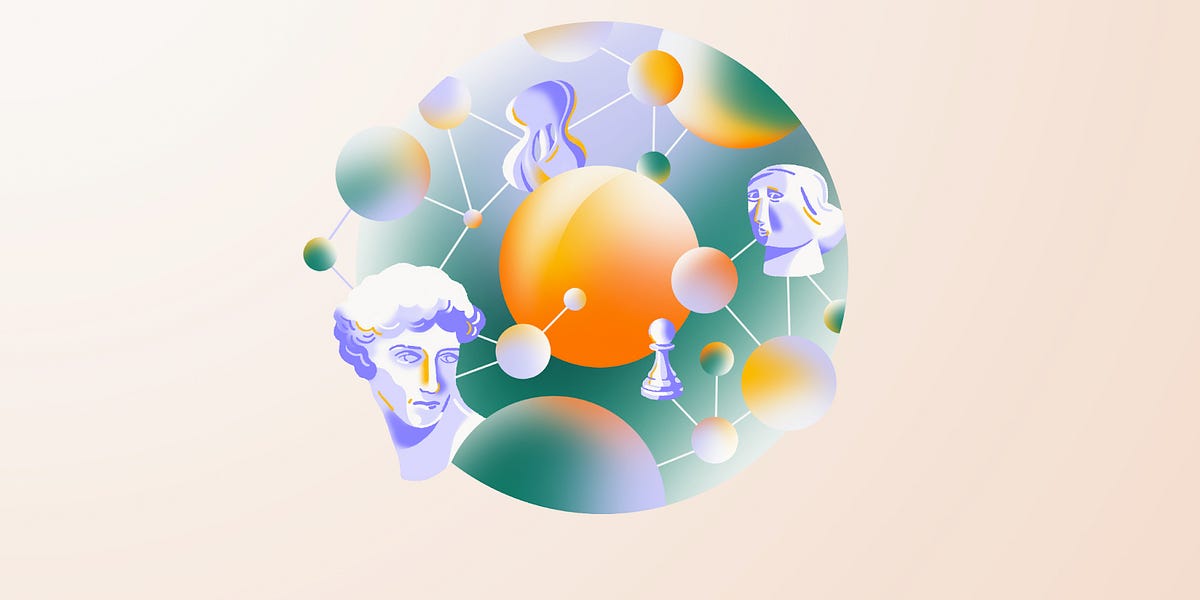- Media Tech Report
- Posts
- How can publishers craft taxonomy pages that improve SEO and UX?
How can publishers craft taxonomy pages that improve SEO and UX?
This issue's Back to Basics section provides 3 practical solutions to this common problem.
How can publishers craft taxonomy pages that improve SEO and UX?
This issue's Back to Basics section provides 3 practical solutions to this common problem, so hang around to the end!
Substack adds Polymarket’s betting embeds
Substack now lets users embed prediction cards from Polymarket. These embeds let users bet on sports, politics, science, and more. However, reaction from the Substack community has been mostly negative. Users' comments show they're concerned about ethics of adding gambling to the service. Polymarket is apparently trying to distance itself from gambling -- it's hard to find the word "bet" on its website.
This seems like a revenue-focused product update just in time for the Olympics' betting fever.

Shockingly enough, beehiiv hasn’t released any updates this week, going against their promise of 6 weeks of continuous product updates.
Perplexity agrees to pay publishers per ad-enabled source links
Perplexity had been refusing to respect publishers' copyrights for months, but that's over now. The AI company will start paying publishers per source link when their content shows up in ad-enabled search results.
NYT’s Cooking integrates with Instacart for easier shopping
NYT Cooking now lets users order missing recipe items through Instacart. Basically, you can ingredients to your cart directly from the app and having Instacart deliver.

It seems these secondary apps are becoming increasingly serious and vital for publishers like NYT, the Guardian, and FT.
A handful of recipes from The New York Times are available in the Instacart app and site, letting foodies order the ingredients from a local grocer for same-day pickup. adweek.it/3xgVwPd
— ADWEEK (@Adweek)
3:16 PM • Jun 11, 2024
With Guardian launching its own cooking app last week, it seems publishers are continuing to diversify their business models and lead-generation channels.
This is part of a larger trend of publishers moving away from traditional ad-driven revenue sources to providing more personalized user experiences and closer relationships with partner brands.
The UX of websites with lots of ads has always seemed awful to me. It is exciting to see publishers finding new ways to use new digital products to fund their business without ruining their relationship with their audience.
A handful of recipes from The New York Times are available in the Instacart app and site, letting foodies order the ingredients from a local grocer for same-day pickup. adweek.it/3xgVwPd
— ADWEEK (@Adweek)
3:16 PM • Jun 11, 2024
Historically, publishers have been great at bringing users to their platform and selling that traffic to advertisers. Now, they are taking more and more ownership of their audience and their user experience using digital products like this NYT’s Cooking with its Instacart integration. It extends the user’s experience beyond content consumption and enables them to shop for ingredients at the same place they are getting the recipe from.
Media Company of the Week: Grist
Grist is a nonprofit media company focusing on environmental journalism, talking about the climate, environmental justice, and sustainability. Grist combines journalism with advocacy to influence public opinion and policy on environmental issues. This attention to social responsibility is what makes Grist stand out from the background.
Back to Basics #2 - How to Do Taxonomy SEO Optimization the Right Way
Welcome back to Media Tech Report's Back to Basics series, where every week, we review one easy-to-accomplish solution to an extremely common problem—and highlight the brands doing it best.
Taxonomy landing pages—that is, content listing pages by category or tag—offer a huge SEO opportunity. When done right, these pages can reduce crawl depth, clarify a site's expertise, and drive readers to high-ROI content.

screenshot from Consumer Report’s Appliances category page
Why category pages are vital for publishers
News and lifestyle media websites serve a considerable amount of content—often tens of thousands of pages. The latest or most popular will end up on the front page or a featured sidebar, but the rest? Category and tag pages are indispensable to allow readers and search crawlers a better chance of finding the right piece of content.
Just having category pages and getting them right are two different things, however. There are a few page structure strategies that can boost your site's standing in the eyes of search engines. How do you make the most of your category pages? Here, we review two best practices for designing category pages that improve SEO.
Strategy 1: Promote subcategories
The biggest advantage of touting subcategories on taxonomy pages is that they reduce crawl depth. Essentially, crawlers are automated programs that search engines like Google use to quickly scan and evaluate a website. The faster it can reach all the pages in your website, the more often a website will be indexed and the more visible its content will be in search results.
A key part of crawling a website quickly is reducing the number of steps a crawler needs to take in order to see the majority of the site content library. This is what we refer to as "crawl depth." If a crawler needs to "click" on a lot of disorganized URLs in order to find the content, it will not index the site as quickly. (Search Engine Land has a greatsummary of crawl depth and why it's important here.)
Search engines prefer a content catalog that is well-structured with a hierarchical taxonomy (i.e., not just "Science" as a category but rather "Science" as a category plus "Environment," "Space," and "Animals" as subcategories). By promoting links to the subcategory pages on the category pages, a website is providing an express lane for crawlers to find all of their content.
An example would be the website Consumer Reports and how elegantly it handles this in its design.
Strategy 2: Pagination
There are merits to designing category pages with infinite scrolling. It's easier for users on mobile devices, for example. Plus, when done right, there is no meaningful difference in SEO between infinite scroll and pagination. However, it's much harder to make sure you're not hiding content from crawlers with infinite scroll. That's why, in our product strategy sessions, we recommend pagination over infinite scroll or "next/previous" structures. Plus, pagination also improves SEO with faster loading times and lighter pages.
So, while it may seem a step back in time, pagination is the right choice for news and media sites.
Bonus Strategy: Selective promotion
There's another way you can optimize your category pages: by putting high-value content in special, high-visibility modules. This is particularly popular among lifestyle brands that create a lot of articles that promote products that drive revenue for the brand, such as buyer's guides. It's also popular for sponsored content. The idea is simple: placing well-monetized articles front and center will drive valuable metrics like views and conversions. Again, Consumer Reports does this well, promoting shoppable content in the right rail of its category pages.
Who does it well?
Take a look at your own site structure and see if these changes could help boost your traffic and reader engagement. Well-organized category pages are a solid foundation for any digital strategy in the news and media industry. Need some product or engineering assistance? We'd love to hear from you.



